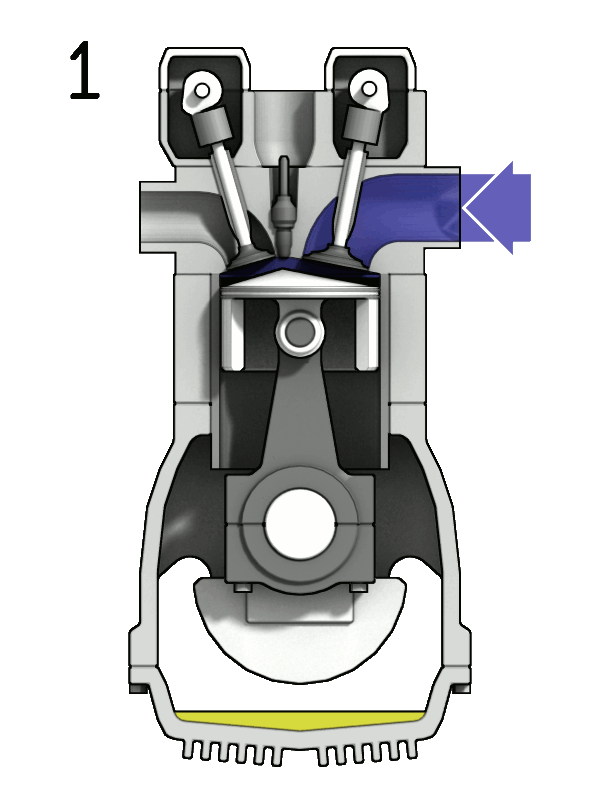Tag: difference between 2 stroke and 4 stroke lawn mower
Difference Between Two Stroke And Four Stroke
Difference Between Two Stroke And Four Stroke: Engines are the heart of machines that power our vehicles, equipment, and even some small appliances. Two-strokes and four-strokes engines are two common types used in various applications.
They differ in their design, operation, and performance characteristics. In this article, we will explore the key differences between two and four-strokes engines.

Difference Between Two Stroke And Four Stroke
1. Number of Strokes:
- Two-Stroke Engine: A two-strokes engine completes its cycle in two strokes of the piston—namely, the compression and power strokes. It combines the intake and exhaust processes in these two strokes.
- Four-Stroke Engine: A four-strokes engine completes its cycle in four strokes of the piston: intake, compression, power, and exhaust. Each strokes has a distinct function.
2. Operation:
- Two-Stroke Engine: In a two-strokes engine, the combustion process occurs every revolution of the crankshaft, making it produce power more frequently. This design tends to be simpler but less fuel-efficient.
- Four-Stroke Engine: In a four-strokes engine, the combustion process occurs every two revolutions of the crankshaft. It has a more structured cycle, leading to greater fuel efficiency and lower emissions.
3. Lubrication:
- Two-Stroke Engine: Two-strokes engines require oil to be mixed with the fuel for lubrication. This oil is burnt during combustion, leading to some emissions and a characteristic blue smoke.
- Four-Stroke Engine: Four-strokes engines have a separate oil reservoir for lubrication, which results in cleaner exhaust emissions.
4. Power Output:
- Two-Stroke Engine: Two-strokes engines are known for their higher power-to-weight ratio, making them suitable for applications where lightweight and compactness are essential.
- Four-Stroke Engine: Four-strokes engines tend to be more fuel-efficient and offer better torque characteristics. They are often used in applications where fuel efficiency is crucial.
5. Exhaust Emissions:
- Two-Stroke Engine: Two-strokes engines are less environmentally friendly due to the incomplete combustion of oil in the fuel mixture, resulting in higher emissions of hydrocarbons and particulate matter.
- Four-Stroke Engine: Four-strokes engines produce fewer emissions and are more compliant with emission regulations, making them a preferred choice in many applications.
6. Maintenance:
- Two-Strokes Engine: Two-strokes engines are relatively simpler in design, requiring less maintenance. However, they may require more frequent attention due to their higher wear rates.
- Four-Stroke Engine: Four-strokes engines have more complex designs and may require more maintenance, but they often have longer service intervals.
7. Applications:
- Two-Strokes Engine: Two-strokes engines are commonly used in applications where weight and simplicity are prioritized, such as small motorcycles, chainsaws, and certain recreational vehicles.
- Four-Strokes Engine: Four-strokes engines are prevalent in automobiles, trucks, larger motorcycles, generators, and many industrial and marine applications.
8. Fuel Efficiency:
- Two-Strokes Engine: Two-strokes engines are generally less fuel-efficient compared to four-strokes engines due to their frequent combustion cycles.
- Four-Strokes Engine: Four-strokes engines offer better fuel efficiency, making them suitable for vehicles and equipment where economy is a key consideration.
In conclusion, the choice between a two-strokes and a four-strokes engine depends on the specific requirements of the application. Two-strokes offer simplicity and higher power output in a lightweight package, while four-strokes provide better fuel efficiency, lower emissions, and durability, making them the preferred choice for many modern vehicles and equipment.


Read More
- Electromagnetic Spectrum Radio Waves
- Behaviour Of Gas Molecules
- Molar Mass Of Oxalic Acid
- Types Of Chemical Bonding
- Chemistry In Everyday Life
Frequently Asked Questions (FAQs) Difference Between Two Strokes And Four Strokes
1. What is the fundamental difference between a two-strokes and a four-strokes engine?
The primary difference lies in the number of strokes required to complete one engine cycle. A two-strokes engine completes a cycle in two strokes (compression and power), while a four-strokes engine completes it in four strokes (intake, compression, power, and exhaust).
2. Which engine type is more fuel-efficient, a two-strokes, or a four-strokes engine?
Generally, four-strokes engines are more fuel-efficient than two-strokes engines. Four-strokes have a more structured combustion cycle, leading to better fuel economy.
3. Are two-strokes engines more powerful than four-strokes engines?
Two-strokes engines often have a higher power-to-weight ratio and can produce more power per unit of displacement. However, four-strokes engines can offer better torque characteristics and efficiency.
4. Do two-strokes engines require mixing oil with fuel for lubrication?
Yes, two-strokes engines require oil to be mixed with the fuel to provide lubrication. This oil is burned during combustion, leading to characteristic blue exhaust smoke.
5. Which type of engine produces fewer emissions, two-strokes, or four-strokes
Four-strokes engines generally produce fewer emissions and are more environmentally friendly due to their cleaner combustion process.